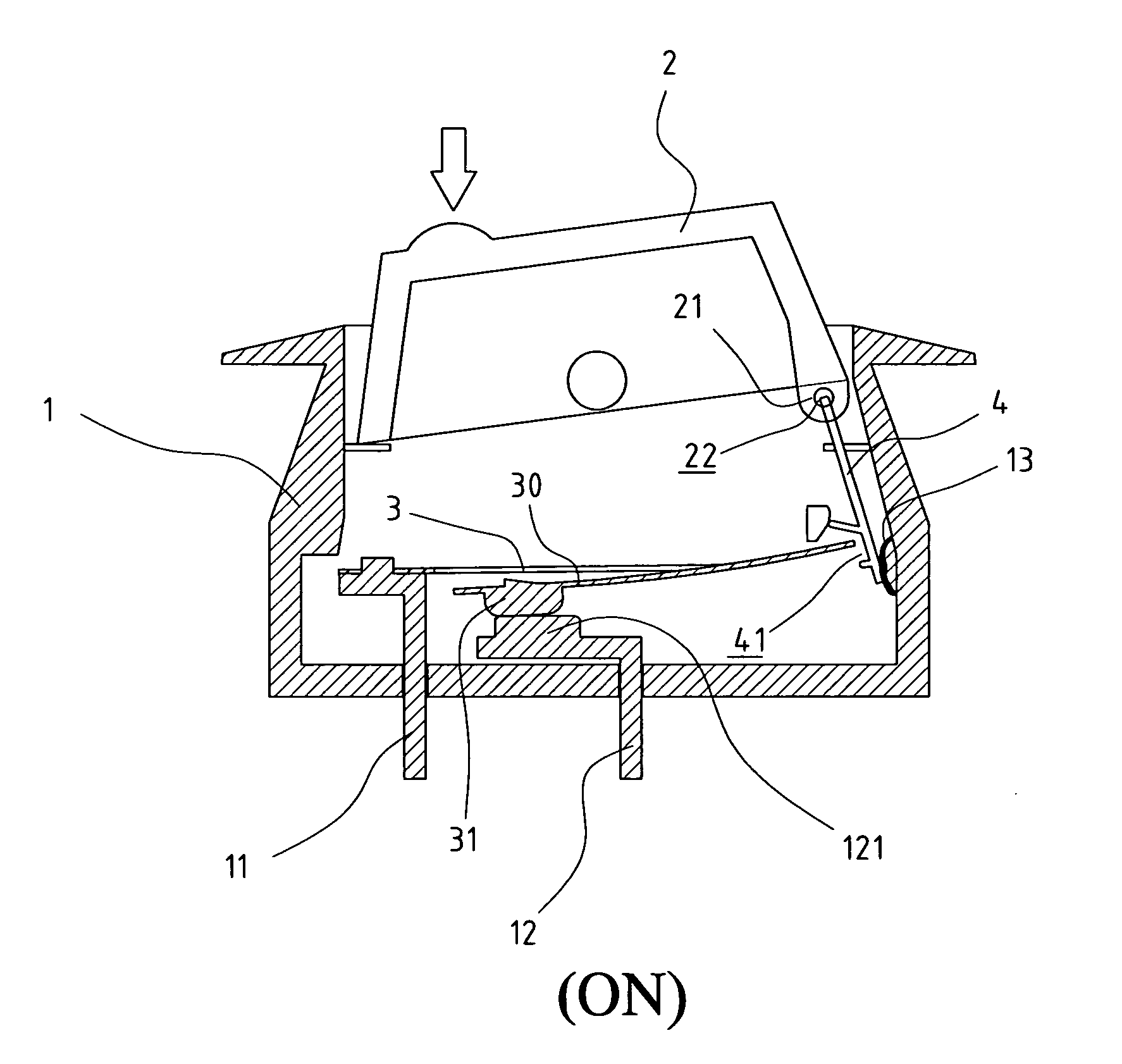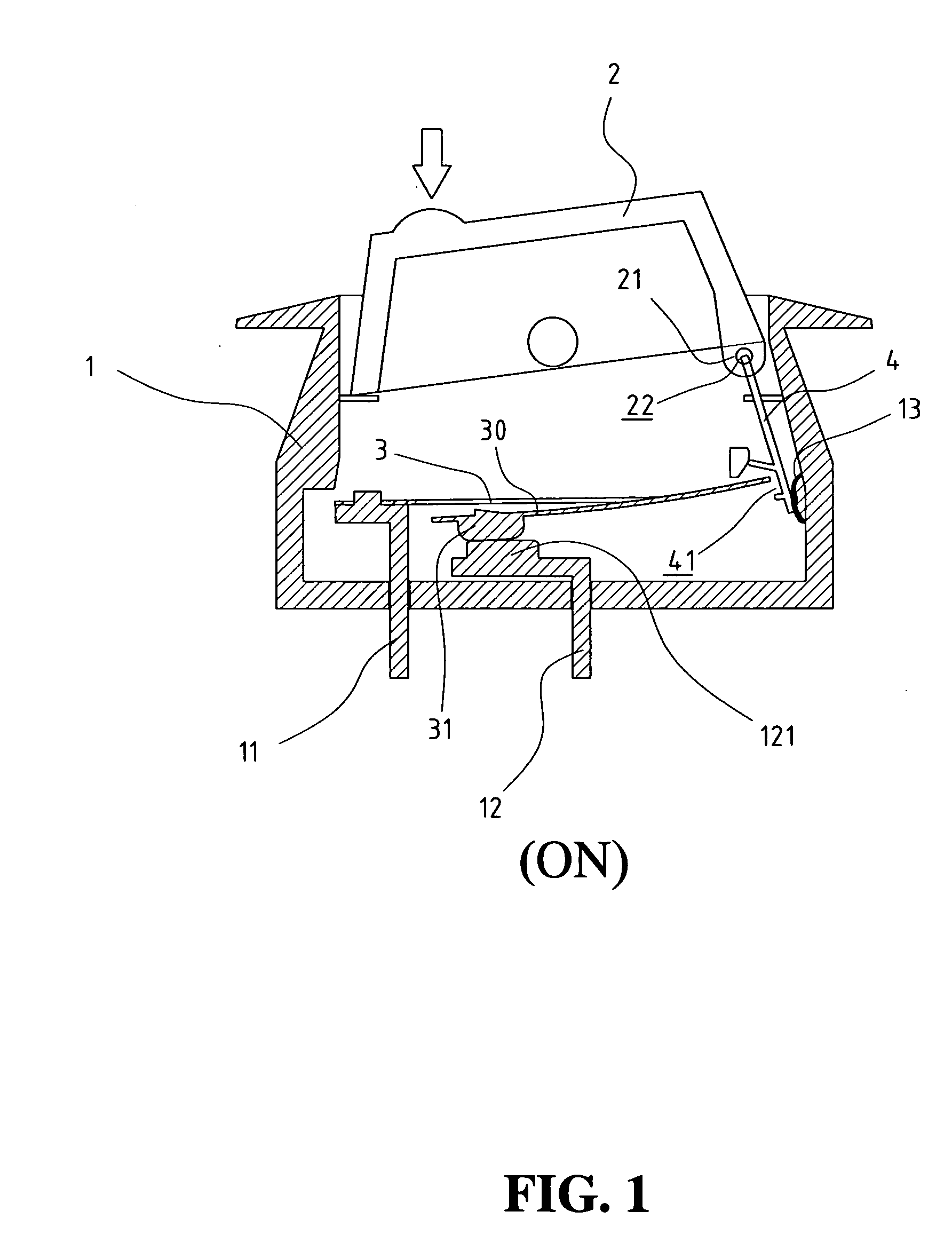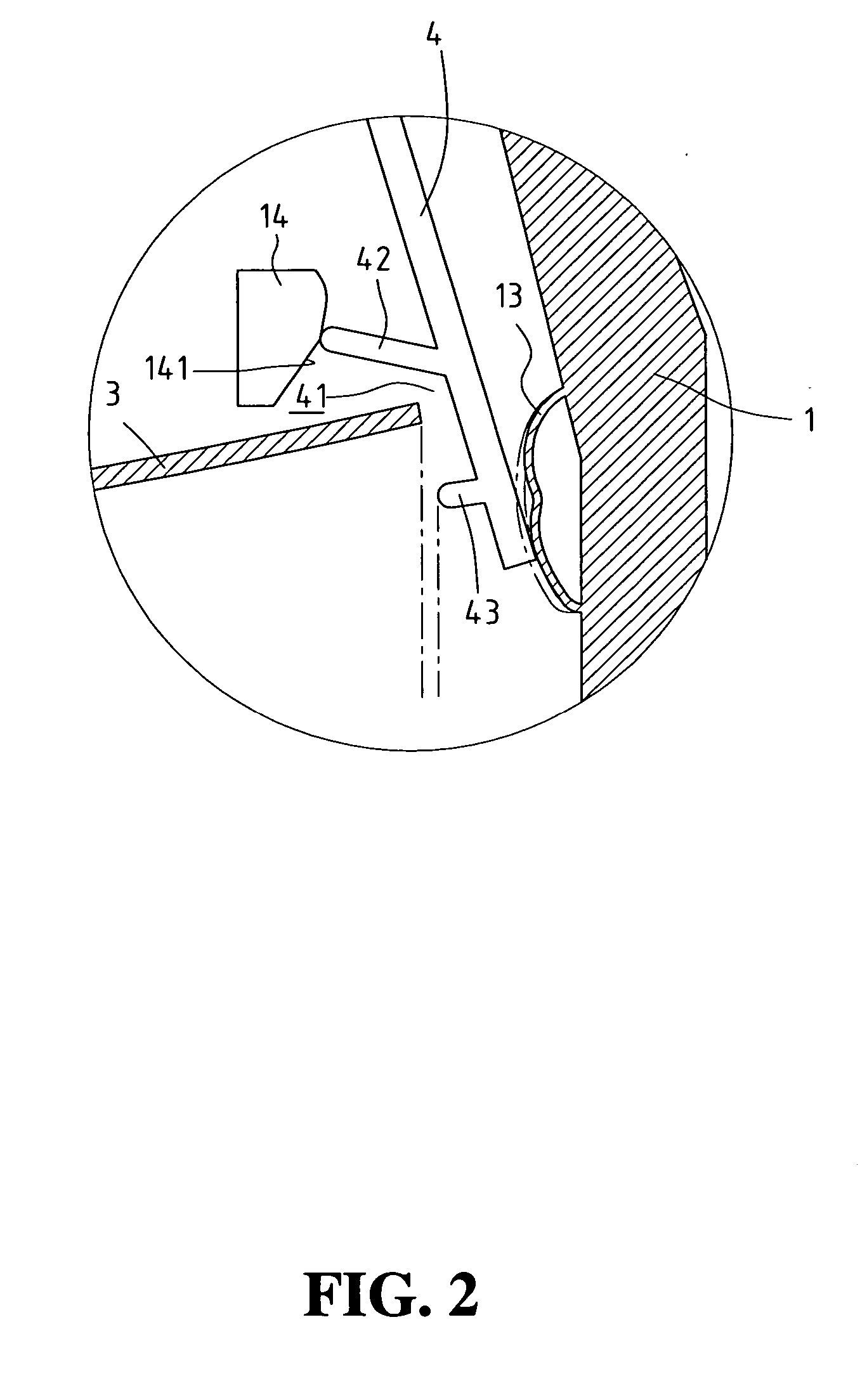Mechanism for trip-free of the bimetallic plate of a safety switch device
- Summary
- Abstract
- Description
- Claims
- Application Information
AI Technical Summary
Benefits of technology
Problems solved by technology
Method used
Image
Examples
Embodiment Construction
[0025] Referring to the drawings and in particular FIGS. 1 and 2, a switch device of the present invention comprises a case 1 having an open top and a switch member 2 is pivotably engaged with the open top of the case 1. A first terminal 11 and a second terminal 12 respectively extend through a bottom of the case 1. A bimetallic plate 3 as shown in FIG. 7 has a first end fixed to the first terminal 11 and a first contact point 31 is connected to a free end 30 of the bimetallic plate 3. The free end 30 is split from the bimetallic plate 3 and the first contact point 31 is connected to the free end 30. A second contact point 121 is connected to the second terminal 12 and located beneath the first contact point 31.
[0026] Further referring to FIG. 9, a hooking member 4 has a rod 41 extending laterally from a first end thereof and is inserted through a hole 22 defined through an extension plate 21 extending form an end of an underside of the switch member 2. A second end of the hooking ...
PUM
 Login to View More
Login to View More Abstract
Description
Claims
Application Information
 Login to View More
Login to View More - R&D
- Intellectual Property
- Life Sciences
- Materials
- Tech Scout
- Unparalleled Data Quality
- Higher Quality Content
- 60% Fewer Hallucinations
Browse by: Latest US Patents, China's latest patents, Technical Efficacy Thesaurus, Application Domain, Technology Topic, Popular Technical Reports.
© 2025 PatSnap. All rights reserved.Legal|Privacy policy|Modern Slavery Act Transparency Statement|Sitemap|About US| Contact US: help@patsnap.com



